Since the launch of Raspberry Pi CM4 and CM4Lite systems-on-module last October, we’ve seen carrier boards bring their own set of features including industrial communication interfaces, a stereoscopic camera, four SATA ports to build a NAS, a DIN-rail based industrial controller, and more.
But so far, I have not seen a Raspberry Pi CM4 carrier board with dual Ethernet ports. Seeed Studio’s “Dual Gigabit Ethernet Carrier Board for Raspberry Pi Compute Module 4” was brought to our attention this morning, but there’s another one with 4G LTE connectivity, Fast+Gigabit Ethernet ports, and extra I/Os courtesy of MCUZone’s CM4-4G IO board. Let’s have a look at both of them.
Dual Gigabit Ethernet Carrier Board for Raspberry Pi Compute Module 4
- Supported SoMs – Raspberry Pi CM4 and CM4Lite with up to 8GB RAM, 32GB eMMC flash, optional WiFi & Bluetooth
- Storage – MicroSD card slot to load OS on CM4Lite
- Video Output – Micro HDMI 2.0 port up to 4Kp60, MIPI DSI connector
- Camera I/F – MIPI CSI connector
- Connectivity – Dual Gigabit Ethernet RJ45 ports, including one implemented through LAN7800 USB 3.1 to Ethernet controller
- USB – 2x USB 3.0 ports, 9-pin USB 3.0 header
- Expansion – FPC connector with I2C, SPI
- Misc – Reset button, 4-pin UART debugging header, fan header
- Power Supply – 5V/3A via USB-C port
- Dimensions – 75 x 64 x 21mm
- Weight – 43 grams without CM4 module
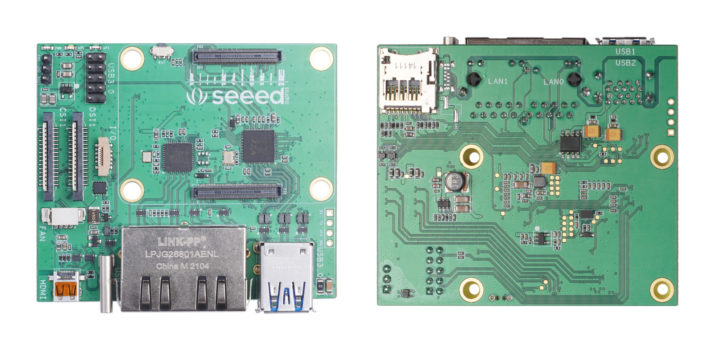
Seeed Studio’s Dual Gigabit Ethernet Carrier Board for Raspberry Pi Compute Module 4 is available for pre-order for $45 plus shipping, with an estimated delivery date currently set to April 15th.
Raspberry Pi CM4-4G IO board
Specifications:
- Supported SoMs – Raspberry Pi CM4 and CM4Lite with up to 8GB RAM, 32GB eMMC flash, optional WiFi & Bluetooth. Note it’s not possible to flash the eMMC flash when the module is attached to the carrier board.
- Storage – MicroSD card slot to load OS on CM4Lite
- Video Output – Full-size HDMI 2.0 port up to 4Kp60
- Audio – Optional 3.5mm audio jack (depends on the selected modem), digital audio output via HDMI
- Connectivity
- Dual Ethernet RJ45 ports with one Gigabit Ethernet port, one Fast Ethernet port implemented through USB.
- SIM card slot plus mPCIe socket for a selection of 4G LTE modems
- MCUZone branded 4G LTE Cat 4 modem
- Various Huawei 4G module for China/Asia Pacific or Russia/EMEA
- EG25-G 4G LTE module for global connectivity
- USB – 2x USB 2.0 ports, 4-pin USB OTG header
- Expansion
- 20-pin unpopulated GPIO header including 4x GND pins
- I2C header
- ADC header
- SPI header
- Misc – CM4 and 4G modem Reset pins and debug UART headers,
- Power Supply – 5V/3A via USB-C port
- Dimensions – 75 x 64 x 21mm
- Weight – 43 grams without CM4 module
The company says all main functions of the board works with Raspberry Pi OS Full/Lite and Ubuntu 20.04 including 4K video output, Ethernet, USB, and 4G LTE connectivity.
Typical use cases include software router and gateway, but data throughput will be lower than for the Seeed Studio board due to USB 2.0 ports, and one of the Ethernet ports is limited to 100Mbps. So MCUZone board may only be preferred when 4G LTE is a must, or extra I/Os are required. The company also offers an optional aluminum allow case supporting one or two high-gain antennas.
MCUZone’s Raspberry Pi CM4-4G IO board can be purchased on Aliexpress for $109 and up. The price is much higher than the Seeed Studio carrier board because the company only sells it with a 4G LTE modem at this time, more precisely a choice of three Huawei modems with the total price ranging from $109 to $129. The metal case adds $11.99.

Jean-Luc started CNX Software in 2010 as a part-time endeavor, before quitting his job as a software engineering manager, and starting to write daily news, and reviews full time later in 2011.
Support CNX Software! Donate via cryptocurrencies, become a Patron on Patreon, or purchase goods on Amazon or Aliexpress


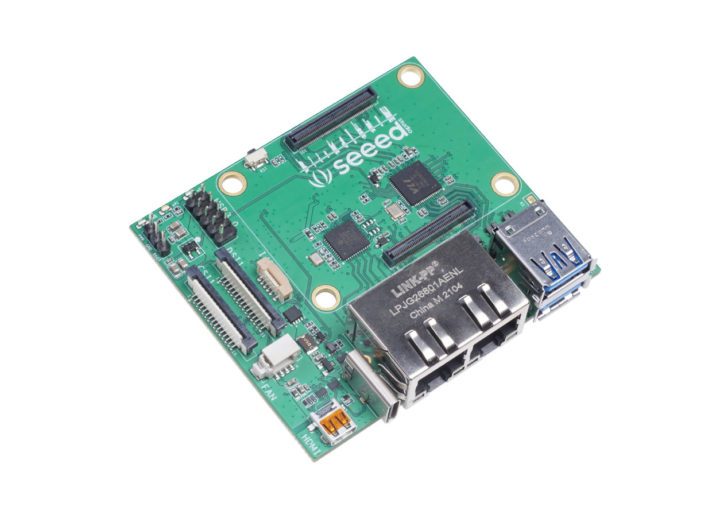
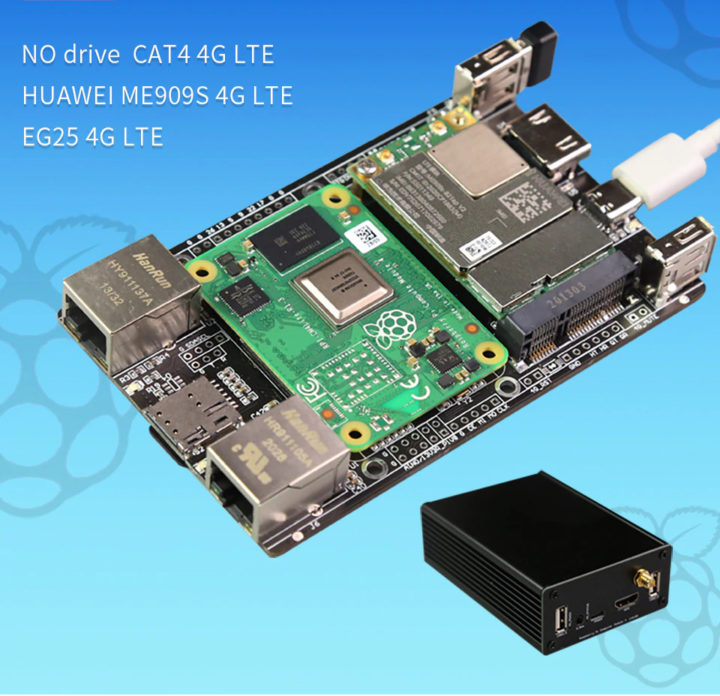
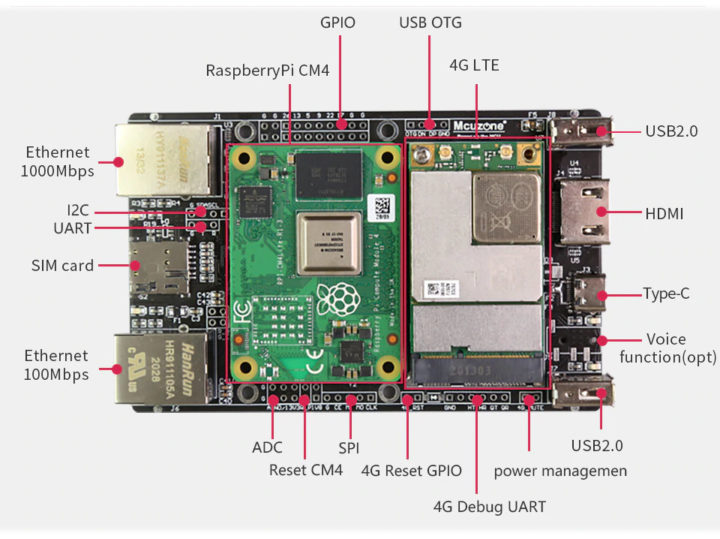
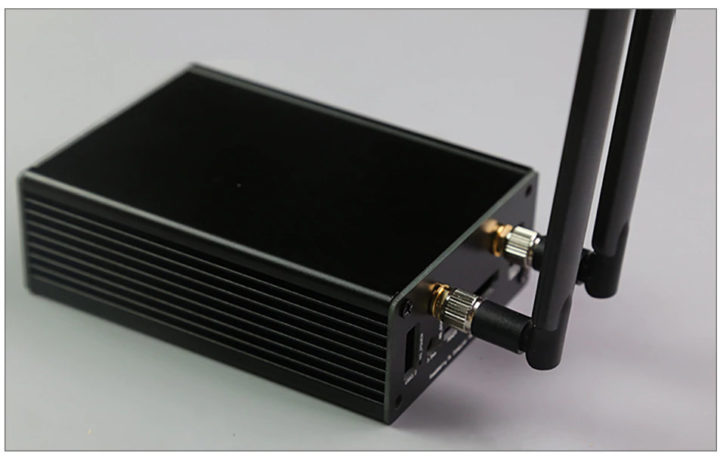



Why are they still using the USB controller?
The design of the Seeed board should be with one Gigabit Ethernet port going through the built-in GMAC, USB 3.0 interfaces through PCIe, and one Gigabit Ethernet through USB 3.0 (via the USB 3.0 PCIe controller) since there aren’t any other interfaces for GbE.
Any idea why they chose the LAN7800 instead of something working more flawlessly?
Answer:
Thank you for asking and the funny answer. The LAN7800 (same Ethernet IP as in the crappy LAN7515 chip on RPi 3B+ where it’s combined with USB2 hubs) is well known for its various problems since the launch of the 3B+ three years ago. Various threads on raspberrypi.org contain the details (you find many of them by searching there for ‘RTL8153’).
Any idea if Seeed’s board has USB gadget on the USB-C port?
I guess Jeff Geerling’s try with a quad gigabit Intel card
https://www.youtube.com/watch?v=a-0PeuPINiQ
is beating any of these 2 for throughput… probably at the expense of power consumption and size/Frankenstein look?
Why can’t they just create a board with dual/quad Intel network chips connected to the PCIe lane?
Or something like the ODROID H2 Net card